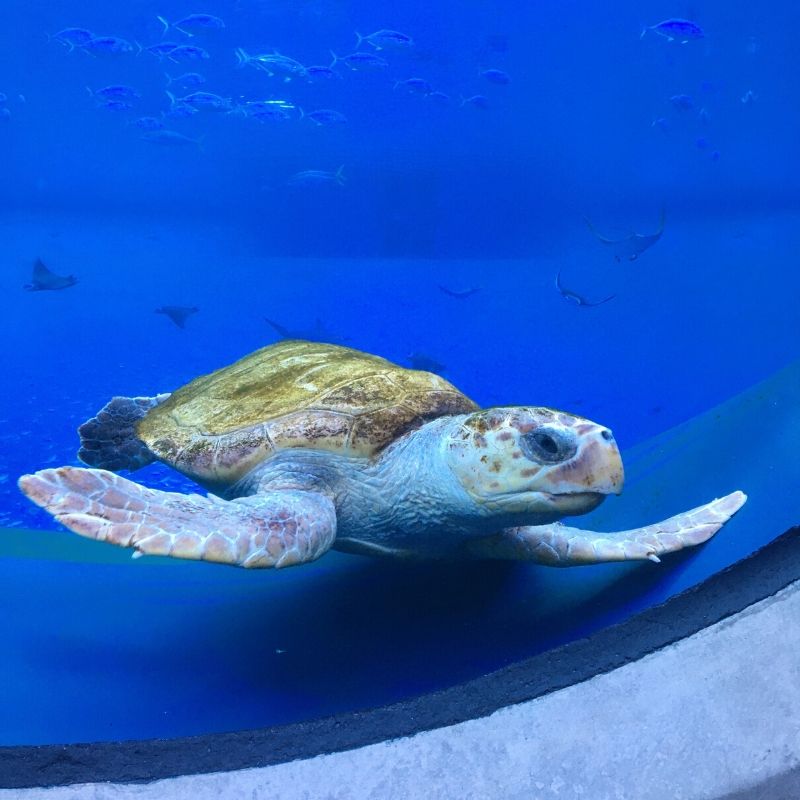
She weighs 135 lbs. and is over 20 years old. Meet our rehabilitated loggerhead turtle, Miko, and learn more about sea turtles in this Frost Science@Home post. When you visit Frost Science, you can see Miko in our iconic Gulf Stream Exhibit.
Top Five Facts About Miko
-
-
- Miko weighs 135 lbs. and is believed to be around 20 to 30 years old (but nobody knows for certain!).
- Miko was rescued by staff at Gulfarium Marine Adventure Park in the Florida Panhandle near Pensacola for ingesting fishing gear. They rehabilitated the turtle and released it three times. The third time she moved to the East Coast of Florida but made her way back to the Panhandle, becoming a return patient once again for eating fishing gear. The Florida Fish and Wildlife Commission (FWC) deemed that Miko could no longer be released into the wild so Frost Science is now her permanent home.
- Miko generally eats once a day.
- We make sure Miko takes all the necessary vitamins, minerals and calories a sea turtle needs to thrive.
- At least once a year, Miko receives a full physical examination to ensure she is healthy, inside and out.
-
Top Five Facts About Sea Turtles
-
-
- There are seven different species of sea turtles, six of which—green, hawksbill, Kemp’s ridley, leatherback, loggerhead and olive ridley—can be found throughout the ocean, in both warm and cool waters. The seventh species, the flatback, lives only in Australia.
- Sea turtles live a long time (some can live up to 50 years or more!) and have similar lifespans to humans. Most marine turtles take decades to mature—between 20 and 30 years—and remain actively reproductive for another 10 years.
- Worldwide, six of the seven sea turtle species are classified as threatened or endangered due to human actions and lifestyles. Accidental capture by fishing gear, which often results in death, is the greatest threat to most sea turtles. Climate change also impacts sea turtle nesting beaches and eggs.
- Depending on the species, sea turtles have a broad diet that includes jellyfish, crabs, shrimp, snails, mollusks and sponges. Green turtles like their greens: adult greens are the only herbivorous sea turtles and eat seagrass and algae to survive.
- Sea turtles will migrate thousands of miles over their lifetimes to eat, breed and lay their eggs. One female leatherback even clocked a 12,000-mile roundtrip journey across the Pacific Ocean! Turtles have a special tool to navigate these epic voyages—an internal GPS using the earth’s magnetic field. Just as sailors use latitude and longitude to navigate the high seas, turtles sense slight variations in the planet’s magnetic field and are able to pinpoint specific coastlines based on their magnetic signature. That’s how many females are able to return to the exact beach where they were born to lay their eggs.
-
With the museum closed due to COVID-19, we are losing admission and event revenue that we so heavily rely on. Please consider making a tax-deductible donation to help offset the cost of animal care and virtual programming during this difficult time. All donations, however small, will have an immediate impact.
For questions on different ways to support Frost Science, please contact advancement@frostscience.org